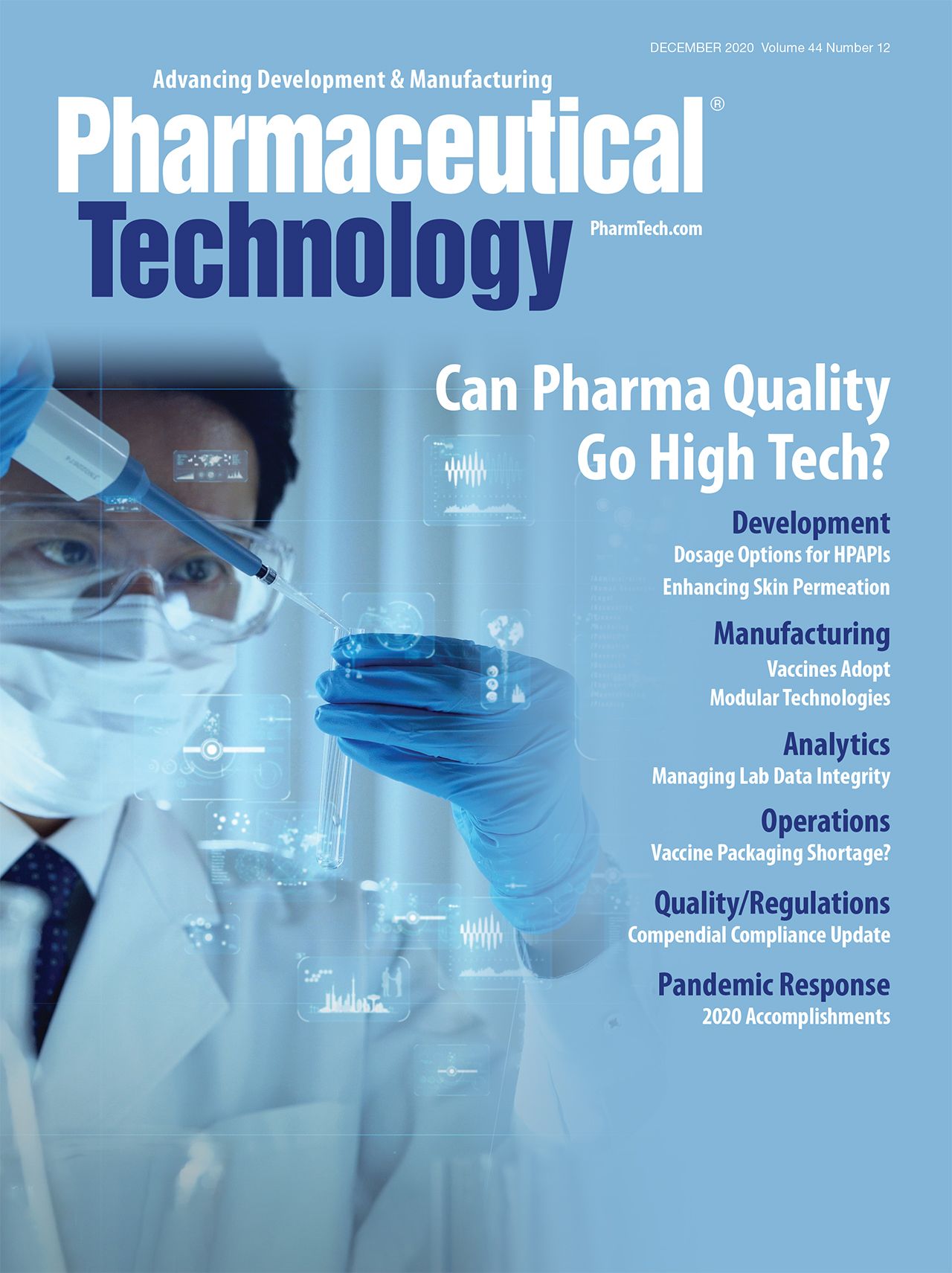E-beam Process Could Offset Sterilization Constraints
Sterilization of primary packaging is important for vaccines.
Sterilization of primary packaging, an essential step in delivering a safe, beneficial vaccine, ranks as a critical factor in the timely distribution of a COVID-19 vaccine. Options include gamma radiation, e-beam, ethylene oxide (EtO), and x-rays, among other technologies. Greater adoption of the e-beam sterilization process could help prevent bottlenecks associated with sterilization constraints.
“At present, e-beam technology accounts for up to 4–6% of the industrial sterilization market. At about 40% of the market, gamma radiation ranks second with EtO at number one with roughly 50%. Steam, heat, and x-ray are examples of sterilization methods that account for the remainder. However, with widespread concern about residues and toxicity, EtO is unlikely to be used for vials [for vaccines] given the nature of the product,” says Gustavo Varca, manager of new applications development at E-BEAM Services.
That leaves gamma and e-beam sterilization as the primary methods to treat packaging for COVID-19 vaccines. “The requests for conversion from gamma to e-beam sterilization have increased considerably in recent months,” reports Varca. He attributes this activity to e-beam’s faster turnaround, lower costs, and more accessible capacity. In addition, he says, E-BEAM Services is giving priority to qualifying and sterilizing COVID-19-related products.
Both gamma and e-beam radiation sterilization methods are governed by the ANSI/AAMI/ISO 11137 standard (1) and may be performed by the manufacturer of the primary packaging or component, the fill/finish operation, or a third-party service. Varca explains, “Gamma sterilization uses the decay of radioactive cobalt-60 to generate photons. In contrast, e-beam uses high-energy, machine-generated electrons to penetrate the products. Each radiation technology sterilizes with the same dose, typically around 15–30 kGy. E-beam delivers a much higher dose rate than gamma (several orders of magnitude higher), which generally means less degradation to sensitive products. Processing time is much faster with e-beam; it might only take a matter of minutes or even seconds with e-beam to achieve the same dose that would take hours to achieve with gamma.” However, he notes, “Gamma has better penetration than e-beam, . . . which makes it a better fit for high-density products.”
With its dependence on cobalt-60, the gamma process is experiencing constraints due to a limited supply and because the material needs to be replaced every eight to 16 months to maintain proper radiation levels. According to Nordion, the dominant supplier of cobalt-60, capacity has risen during the past five years and investments are continuing, but demand currently exceeds supply by approximately 5% (2).
Meanwhile, although E-BEAM Services currently has capacity available, it has been working to expand beyond the five beams currently operating in North America. Starting up a new e-beam facility takes between 24–30 months from design concept to qualified operation and requires high capital investment, licensing, and training. “It’s not a simple feat,” concludes Varca.
References
- ANSI, ANSI/AAMI/ISO 11137, Sterilization of Health Care Products.
- Medical Design Briefs, “Inside Story: Nordion,” Oct. 1, 2020, www.medicaldesignbriefs.com, accessed Oct. 27, 2020.
About the author
Hallie Forcinio is packaging editor for Pharmaceutical Technology, editorhal@sbcglobal.net.
Article Details
This article appeared as a sidebar to “Is the Packaging Supply Chain Ready?” in
Pharmaceutical Technology
Vol. 44, No. 12
December 2020
Pages: 47–50
Citation
When referring to this article, please cite it as H. Forcinio, “E-beam Process Could Offset Sterilization Constraints” Pharmaceutical Technology 44 (12) 2020.

Drug Solutions Podcast: A Closer Look at mRNA in Oncology and Vaccines
April 30th 2024In this episode fo the Drug Solutions Podcast, etherna’s vice-president of Technology and Innovation, Stefaan De Koker, discusses the merits and challenges of using mRNA as the foundation for therapeutics in oncology as well as for vaccines.